Choosing the right roofing material is one of the most important decisions you’ll make as a homeowner. The roof is not just a protective shield for your home but also a significant factor in its overall aesthetic appeal, energy efficiency, and long-term maintenance costs. With so many options available, making the right choice can be overwhelming. This guide will walk you through the most common roofing materials, their benefits, drawbacks, and what you should consider when making your decision.
1. Asphalt Shingles
Pros:
- Affordability: Asphalt shingles are one of the most cost-effective roofing options available, making them popular for many homeowners.
- Versatility: They come in various colors and styles, allowing you to find a look that matches your home’s design.
- Ease of Installation: Asphalt shingles are relatively easy to install, which can reduce labor costs.
Cons:
- Durability: They typically last 20-30 years, which is shorter than some other materials.
- Susceptibility to Weather Damage: Extreme weather conditions, such as high winds and hail, can damage asphalt shingles.
Best For: Homes in moderate climates where extreme weather isn’t a frequent concern.
2. Metal Roofing
Pros:
- Longevity: Metal roofs can last 40-70 years, significantly outlasting other materials.
- Durability: Metal is resistant to extreme weather conditions, including heavy rain, snow, and high winds.
- Energy Efficiency: Metal roofs reflect sunlight, helping to reduce cooling costs in hot climates.
Cons:
- Cost: The upfront cost is higher than other materials like asphalt shingles.
- Noise: Rain or hail can be noisy on a metal roof, though insulation can mitigate this issue.
Best For: Homes in areas prone to harsh weather or those looking for a long-term, energy-efficient roofing solution.
3. Slate Roofing
Pros:
- Aesthetic Appeal: Slate offers a timeless, natural look that adds elegance to any home.
- Longevity: Slate roofs can last over 100 years if properly maintained.
- Fire Resistance: Slate is highly resistant to fire, providing additional safety for your home.
Cons:
- Cost: Slate is one of the most expensive roofing materials.
- Weight: It’s extremely heavy, often requiring additional structural support for your home.
- Complex Installation: Installing slate requires specialized skills, which can increase labor costs.
Best For: Historic or high-end homes where the aesthetic and long-term durability justify the higher cost.
4. Tile Roofing
Pros:
- Durability: Tile roofs can last 50-100 years, withstanding fire, rot, and insect damage.
- Aesthetic Variety: Available in various shapes, colors, and styles, tile can enhance the architectural style of Mediterranean, Spanish, or Southwestern homes.
- Energy Efficiency: Tiles provide natural ventilation, reducing cooling costs.
Cons:
- Weight: Like slate, tile is heavy and may require additional structural support.
- Fragility: While durable, tiles can crack if walked on, making maintenance tricky.
- Cost: Both material and installation costs are higher compared to other options.
Best For: Homes with specific architectural styles or those in hot climates where tile’s cooling benefits can be maximized.
5. Wood Shingles and Shakes
Pros:
- Natural Beauty: Wood shingles and shakes offer a rustic, natural appearance that complements various home styles.
- Insulation: Wood provides good insulation, keeping your home warmer in winter and cooler in summer.
- Eco-Friendly: Wood is a renewable resource, and many wood shingles and shakes are made from sustainable sources.
Cons:
- Maintenance: Wood requires regular maintenance to prevent mold, rot, and insect infestation.
- Fire Risk: Wood is more susceptible to fire unless treated with a fire-resistant coating.
- Cost: While not as expensive as slate or tile, wood is pricier than asphalt.
Best For: Homes in dry climates where the risk of fire is low, and the natural aesthetic is desired.
Factors to Consider When Choosing Your Roofing Material
1. Climate:
Your local climate plays a significant role in determining the best roofing material. For example, metal roofs are ideal for areas with heavy snowfall, while tile or slate might be better suited for hot, dry climates.
2. Budget:
While it’s tempting to go for the most durable or aesthetically pleasing option, it’s essential to balance your choice with your budget. Consider both the upfront costs and long-term maintenance expenses.
3. Architectural Style:
The style of your home should guide your roofing material choice. A modern home might look best with a sleek metal roof, while a traditional home could be better suited to wood
For a Free estimate and personal guide to the best roofing material for your roof, Give us A call 📱 956-803-2203
